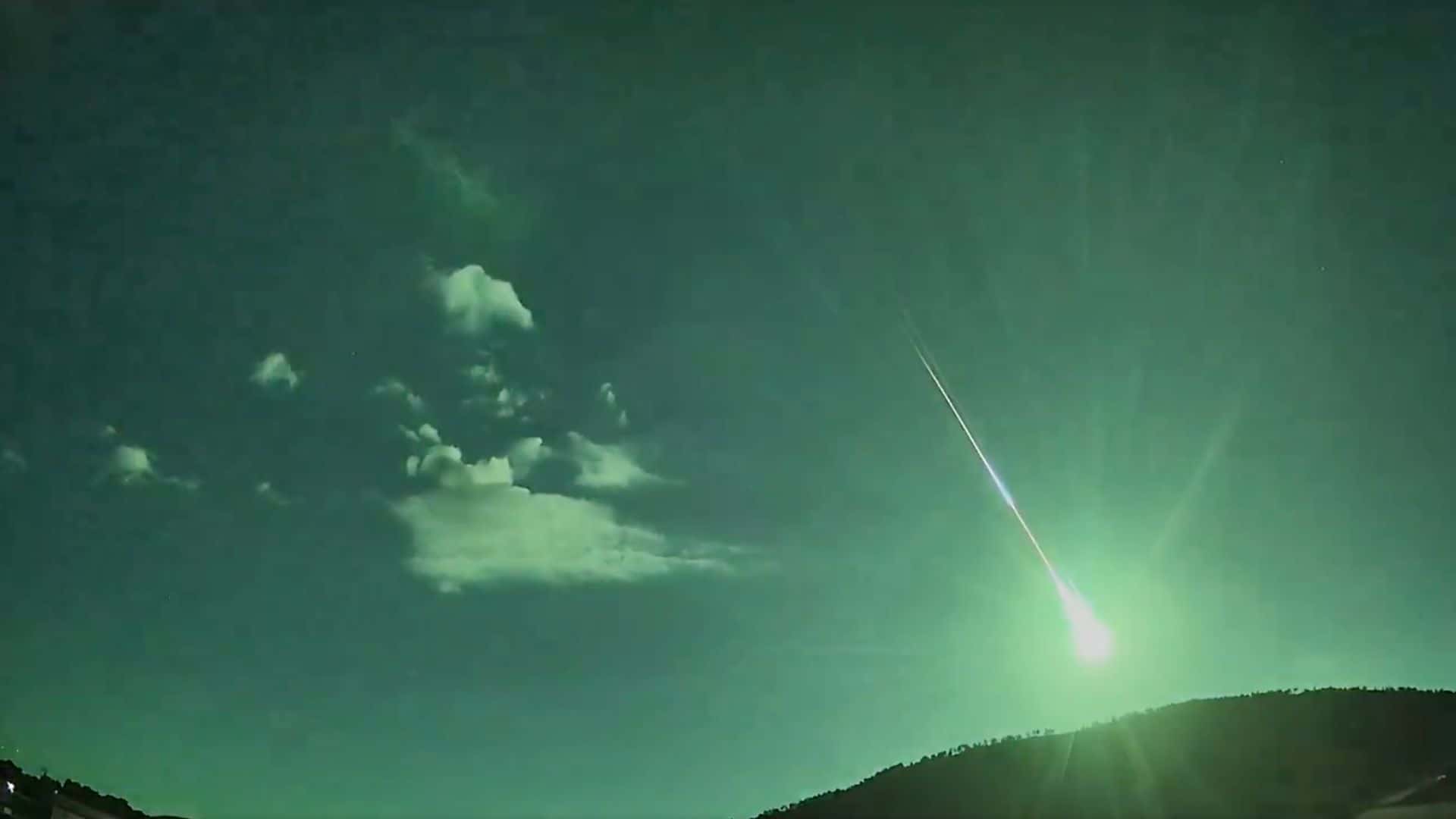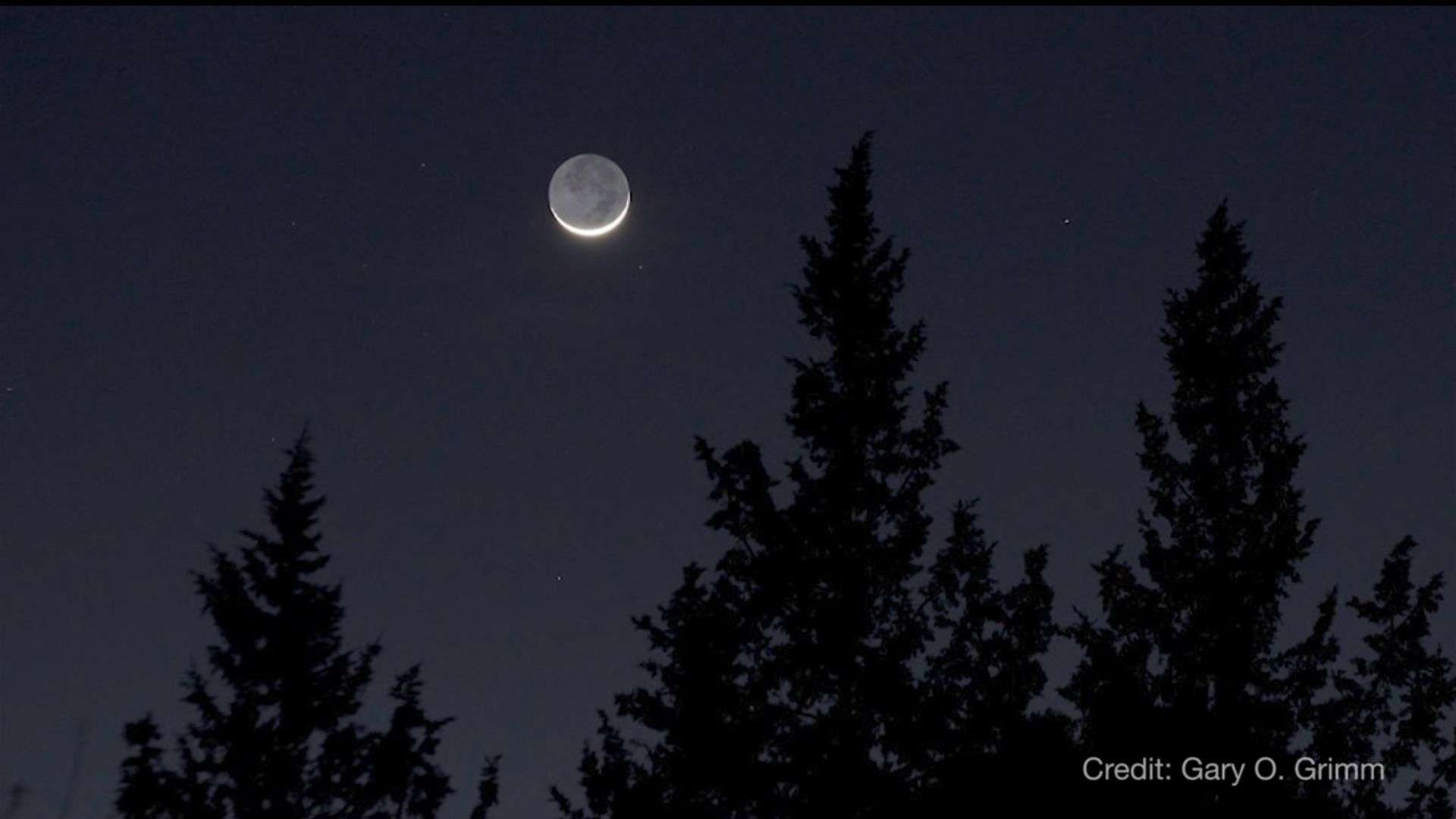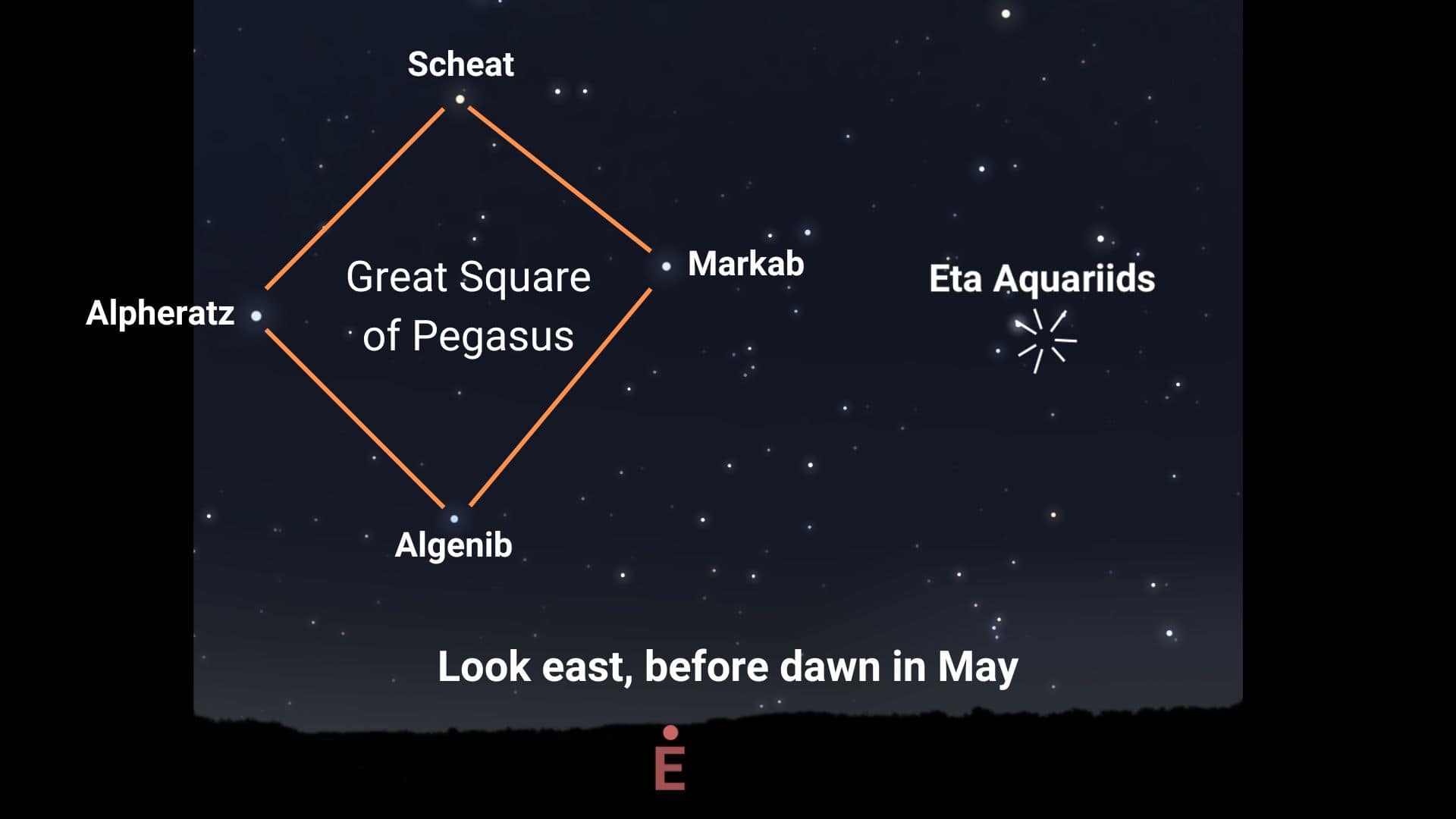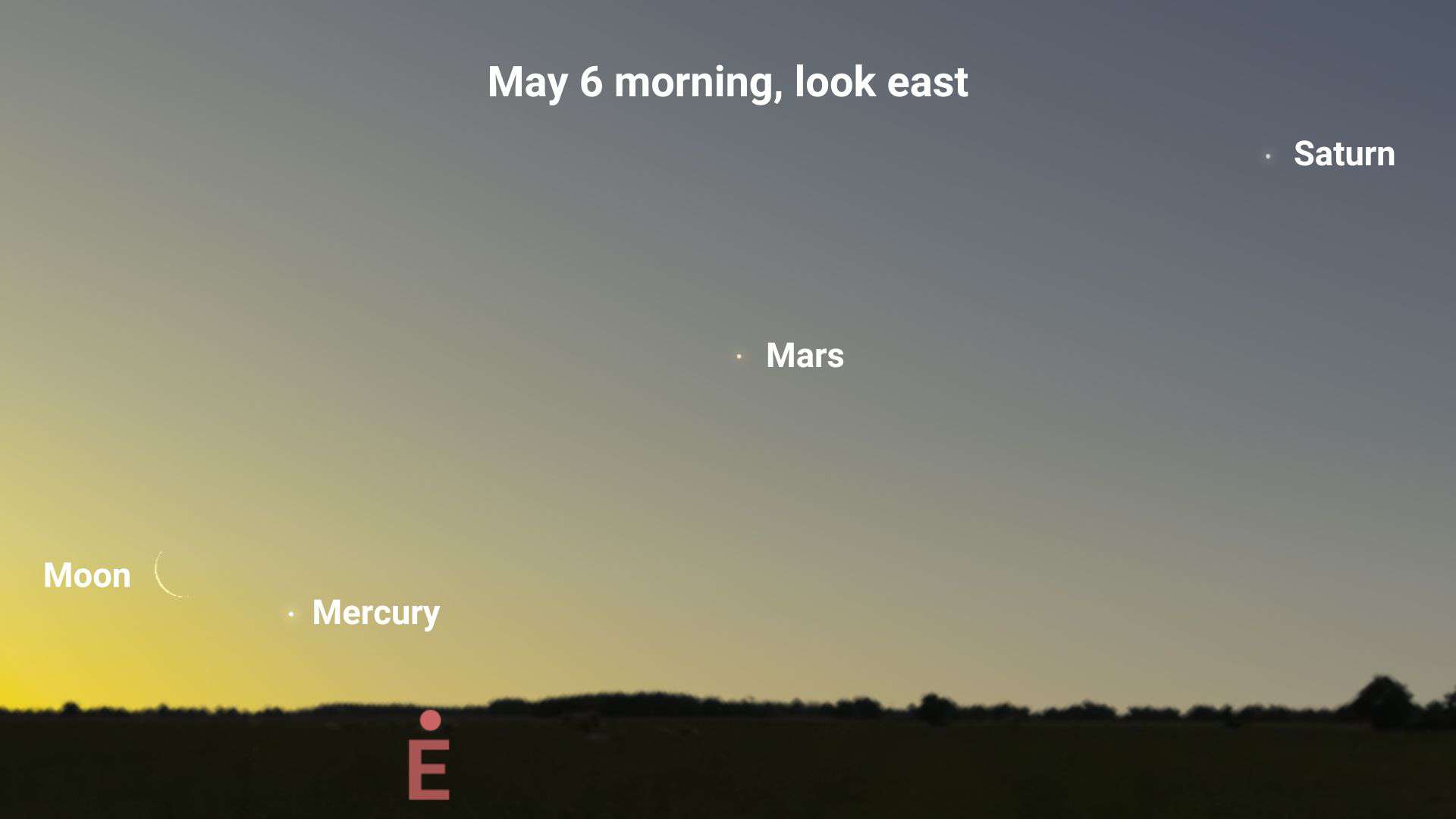A total solar eclipse will be visible on Monday, April 8, 2024, from parts of Mexico, the United States, and Canada.
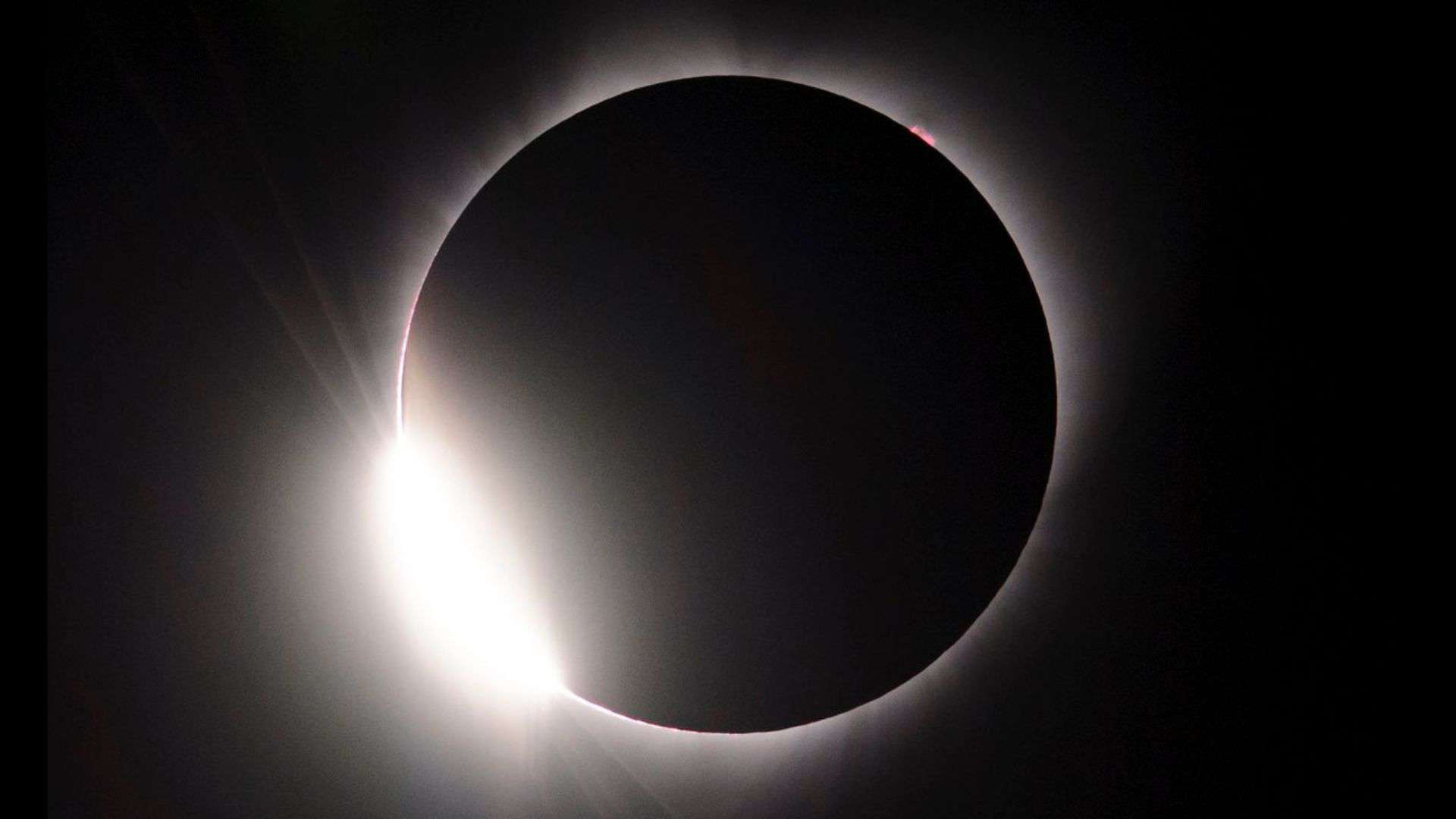
The total solar eclipse will enter through the Pacific coast of Mexico in North America at around 12:07 p.m. MDT (2:07 p.m. EDT, 18:07 UTC) on April 8, 2024 and then move through a few cities in Mexico before entering the United States, according to NASA. In Mexico, the total solar eclipse will last around 40 minutes.
In the US, the total solar eclipse will enter at around 1:27 p.m. CDT (2:27 p.m. EDT, 18:27 UTC) and move through 15 US states. These states are Texas, Oklahoma, Arkansas, Missouri, Tennessee, Kentucky, Illinois, Indiana, Ohio, Michigan, Pennsylvania, New York, Vermont, New Hampshire, and Maine. In the US, the total solar eclipse will last around 1 hour and 8 minutes and in each state it will stay for a few minutes.
After the US, the total solar eclipse will be visible in Canada before leaving North America at around 5:16 p.m. NDT (3:46 p.m. EDT, 19:46 UTC) through the Atlantic coast of Newfoundland, Canada. In Canada, the total solar eclipse will last around 34 minutes, according to timeanddate.com.
Here’s a handy guide that shows the time and path of the total solar eclipse on April 8, 2024, through the major cities of North America.
Here, the path of total eclipse means the region from which you can see the moon blocking the entire disk of the sun.
The path of the total solar eclipse on April 8, 2024, will range between 108 miles (174 km) and 122 miles (196 km) wide, according to NASA.
Outside the path of a total solar eclipse, you will experience only a partial solar eclipse where the moon blocks parts of the sun’s disk. On Monday, April 8, 2024, a partial solar eclipse will be visible across North America.
The path of the total solar eclipse will cross different time zones in North America. The times listed below are in local time.
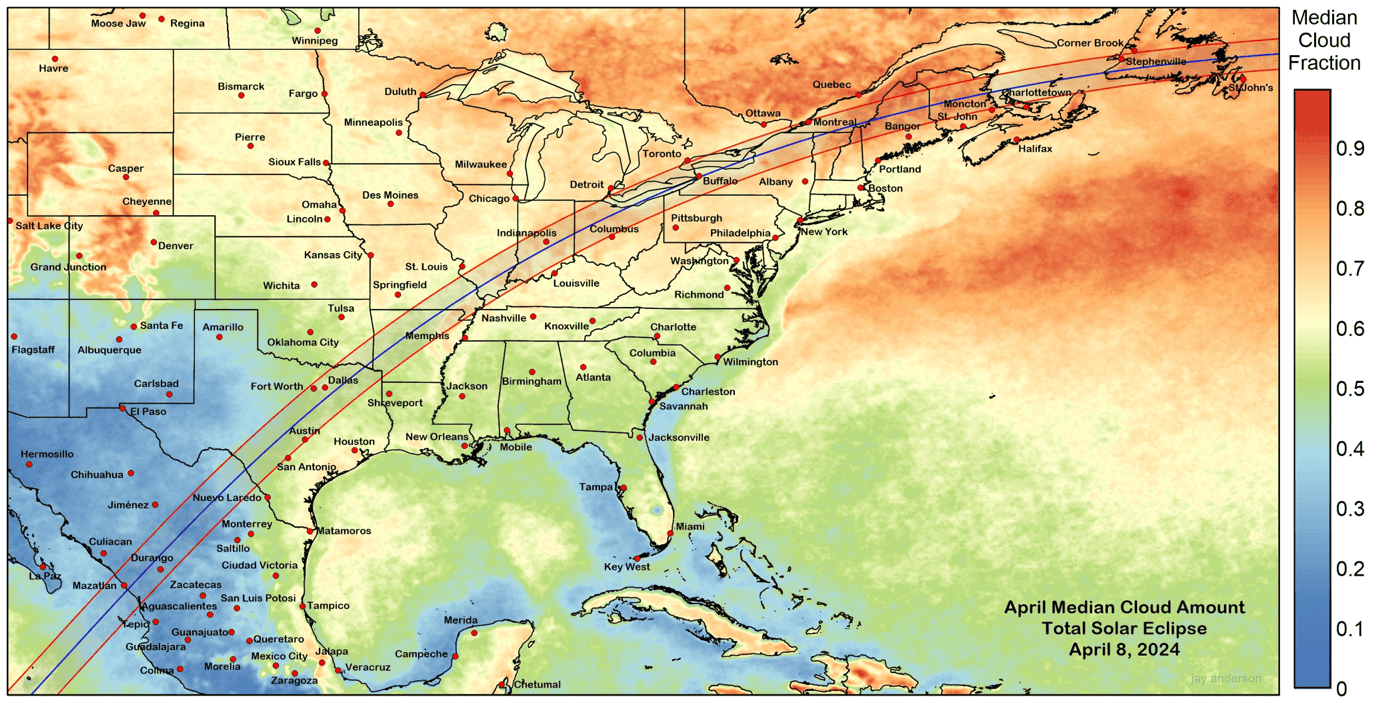
The time and path of the total solar eclipse over Mexico
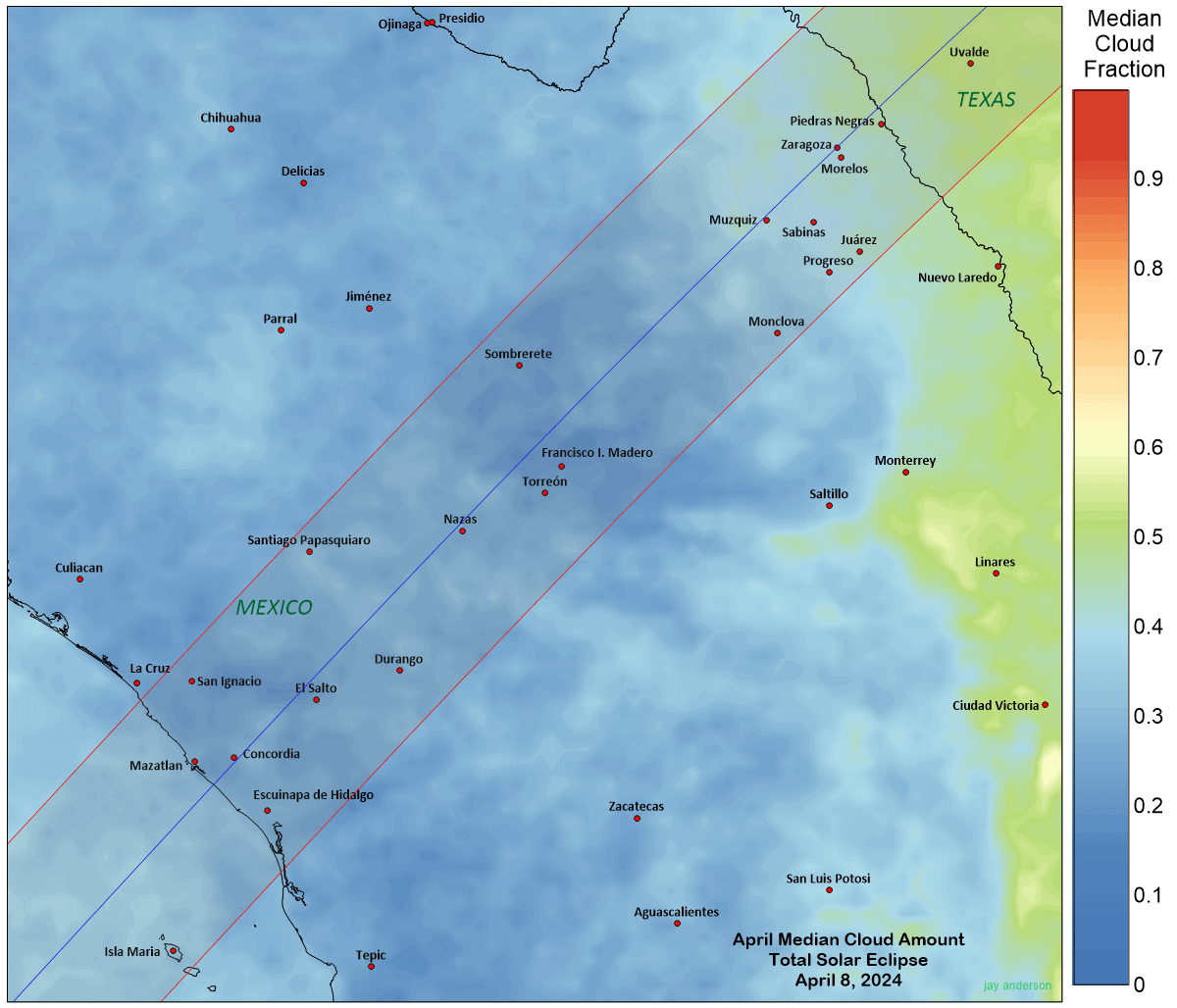
| City inside the path of totality | Duration of totality | Partial eclipse begins | Total eclipse begins | Partial eclipse ends |
|---|---|---|---|---|
| Mazatlan, Mexico | 4m 14s | 10:51 a.m. MDT | 12:07 p.m. MDT | 1:32 p.m. MDT |
| Durango, Mexico | 3m 51s | 11:55 a.m. CDT | 1:12 p.m. CDT | 2:36 p.m. CDT |
| Nazas, Mexico | 4m 27s | 11:58 a.m. CDT | 1:15 p.m. CDT | 2:39 p.m. CDT |
| Torreon, Mexico | 4m 15s | 11:59 a.m. CDT | 1:16 p.m. CDT | 2:41 p.m. CDT |
| Zaragoza, Mexico | 4m 27s | 12:09 p.m. CDT | 1:26 p.m. CDT | 2:50 p.m. CDT |
Here, Mountain Daylight Time (MDT) = UTC – 6 hours
Central Daylight Time (CDT) = UTC – 5 hours
Note: The total solar eclipse will first be visible from Mazatlan, Mexico, in North America, which is located on the Pacific coast, and the longest period of totality will become visible near Nazas, Mexico, where totality will last up to 4 minutes, 28 seconds.
The time and path of the total solar eclipse over Texas
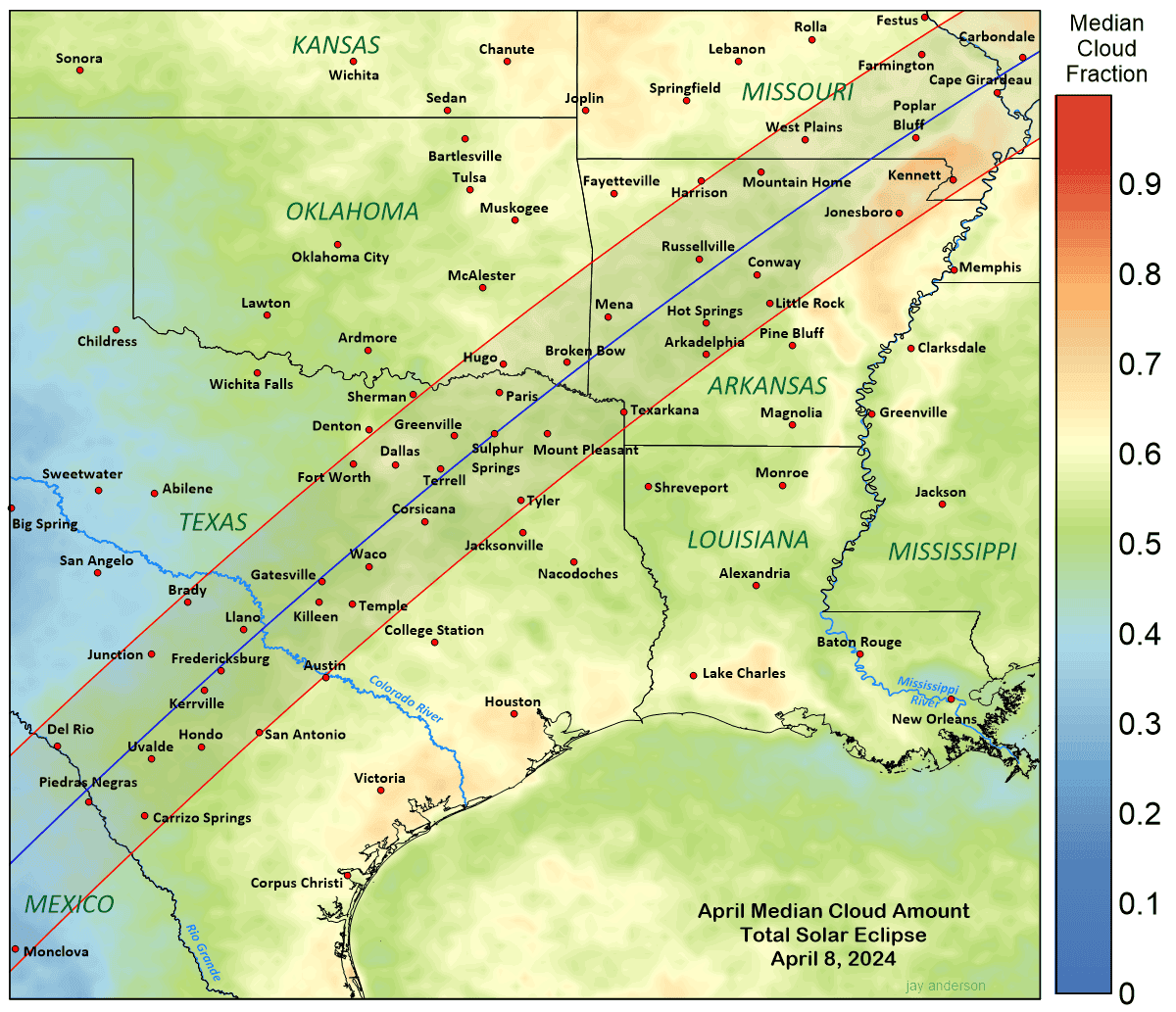
| City inside the path of totality | Duration of totality | Partial eclipse begins | Total eclipse begins | Partial eclipse ends |
|---|---|---|---|---|
| Eagle Pass, Texas | 4m 23s | 12:10 p.m. CDT | 1:27 p.m. CDT | 2:51 p.m. CDT |
| Uvalde, Texas | 4m 16s | 12:12 p.m. CDT | 1:29 p.m. CDT | 2:53 p.m. CDT |
| Kerrville, Texas | 4m 23s | 12:14 p.m. CDT | 1:32 p.m. CDT | 2:55 p.m. CDT |
| Austin, Texas | 1m 53s | 12:17 p.m. CDT | 1:36 p.m. CDT | 2:58 p.m. CDT |
| Killeen, Texas | 4m 17s | 12:18 p.m. CDT | 1:36 p.m. CDT | 2:59 p.m. CDT |
| Fort Worth, Texas | 2m 34s | 12:22 p.m. CDT | 1:40 p.m. CDT | 3:01 p.m. CDT |
| Dallas, Texas | 3m 47s | 12:23 p.m. CDT | 1:40 p.m. CDT | 3:02 p.m. CDT |
Note: Texas will be the first state to experience a total solar eclipse in the US. The total solar eclipse will enter Texas at around 1:27 p.m. CDT and leave the state at around 1:49 p.m. CDT.
The time and path of the total solar eclipse over Oklahoma

| City inside the path of totality | Duration of totality | Partial eclipse begins | Total eclipse begins | Partial eclipse ends |
|---|---|---|---|---|
| Idabel, Oklahoma | 4m 16s | 12:28 p.m. CDT | 1:45 p.m. CDT | 3:06 p.m. CDT |
Note: The total solar eclipse will enter Oklahoma at around 1:44 p.m. CDT and leave the state at around 1:51 p.m. CDT. Only the southeast part of Oklahoma will experience totality.
The time and path of the total solar eclipse over Arkansas

| City inside the path of totality | Duration of totality | Partial eclipse begins | Total eclipse begins | Partial eclipse ends |
|---|---|---|---|---|
| Texarkana, Arkansas | 2m 24s | 12:28 p.m. CDT | 1:47 p.m. CDT | 3:08 p.m. CDT |
| Little Rock, Arkansas | 2m 33s | 12:33 p.m. CDT | 1:51 p.m. CDT | 3:11 p.m. CDT |
| Batesville, Arkansas | 4m 03s | 12:36 p.m. CDT | 1:53 p.m. CDT | 3:13 p.m. CDT |
| Jonesboro, Arkansas | 2m 24s | 12:37 p.m. CDT | 1:55 p.m. CDT | 3:14 p.m. CDT |
Note: The total solar eclipse will enter Arkansas at around 1:45 p.m. CDT and leave the state at around 2:00 p.m. CDT. The cities that are located in the middle of the path (here near the blue line) will experience a longer total solar eclipse than those on the edges.
The time and path of the total solar eclipse over Missouri

| City inside the path of totality | Duration of totality | Partial eclipse begins | Total eclipse begins | Partial eclipse ends |
|---|---|---|---|---|
| Poplar Bluff, Missouri | 4m 08s | 12:39 p.m. CDT | 1:56 p.m. CDT | 3:15 p.m. CDT |
| Cape Girardeau, Missouri | 4m 06s | 12:41 p.m. CDT | 1:58 p.m. CDT | 3:17 p.m. CDT |
| Sikeston, Missouri | 3m 31s | 12:41 p.m. CDT | 1:58 p.m. CDT | 3:17 p.m. CDT |
Note: The total solar eclipse will enter Missouri at around 1:53 p.m. CDT and leave the state at around 2:02 p.m. CDT. Like Oklahoma, only the southeast part of Missouri will experience totality.
The time and path of the total solar eclipse over Kentucky
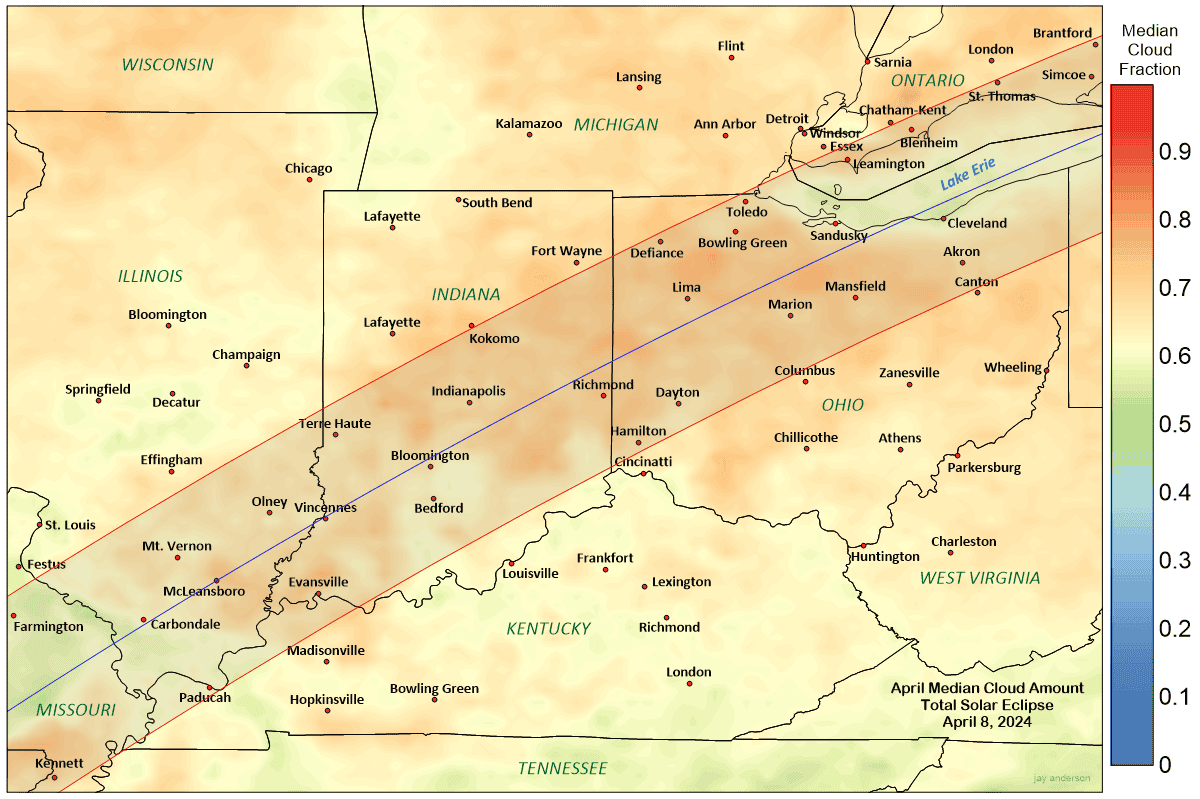
| City inside the path of totality | Duration of totality | Partial eclipse begins | Total eclipse begins | Partial eclipse ends |
|---|---|---|---|---|
| Paducah, Kentucky | 1m 50s | 12:42 p.m. CDT | 2:00 p.m. CDT | 3:18 p.m. CDT |
Note: The total solar eclipse will enter Kentucky at around 1:58 p.m. CDT and leave the state at around 2:05 p.m. CDT. However, before entering Kentucky, a tiny portion of Tennessee (the north-west part) will experience a total solar eclipse, which will begin at around 1:58 p.m. CDT and end at around 2:00 p.m. CDT.
The time and path of the total solar eclipse over Illinois

| City inside the path of totality | Duration of totality | Partial eclipse begins | Total eclipse begins | Partial eclipse ends |
|---|---|---|---|---|
| Carbondale, Illinois | 4m 08s | 12:42 p.m. CDT | 1:59 p.m. CDT | 3:18 p.m. CDT |
| Mount Vernon, Illinois | 3m 40s | 12:44 p.m. CDT | 2:00 p.m. CDT | 3:18 p.m. CDT |
Note: The total solar eclipse will enter Illinois at around 1:58 p.m. CDT and leave the state at around 2:07 p.m. CDT. Inside the path, you will experience a partial solar eclipse before and after the total solar eclipse. The amount of sun blockage will gradually increase before the total solar eclipse, and after the total eclipse, this amount will gradually decrease. During the total solar eclipse, the moon will block 100% of the sun’s disk.
The time and path of the total solar eclipse over Indiana

| City inside the path of totality | Duration of totality | Partial eclipse begins | Total eclipse begins | Partial eclipse ends |
|---|---|---|---|---|
| Evansville, Indiana | 3m 02s | 12:45 p.m. CDT | 2:02 p.m. CDT | 3:20 p.m. CDT |
| Terre Haute, Indiana | 2m 57s | 1:48 p.m. EDT | 3:04 p.m. EDT | 4:21 p.m. EDT |
| Indianapolis, Indiana | 3m 46s | 1:50 p.m. EDT | 3:06 p.m. EDT | 4:23 p.m. EDT |
Here, Eastern Daylight Time (EDT) = UTC – 4 hours
Note: The total solar eclipse will enter Indiana at around 2:01 p.m. CDT and leave the state at around 3:12 p.m. EDT.
The time and path of the total solar eclipse over Ohio

| City inside the path of totality | Duration of totality | Partial eclipse begins | Total eclipse begins | Partial eclipse ends |
|---|---|---|---|---|
| Dayton, Ohio | 2m 46s | 1:53 p.m. EDT | 3:09 p.m. EDT | 4:25 p.m. EDT |
| Wapakoneta, Ohio | 3m 55s | 1:54 p.m. EDT | 3:09 p.m. EDT | 4:25 p.m. EDT |
| Toledo, Ohio | 1m 54s | 1:56 p.m. EDT | 3:12 p.m. EDT | 4:26 p.m. EDT |
| Cleveland, Ohio | 3m 50s | 1:59 p.m. EDT | 3:13 p.m. EDT | 4:29 p.m. EDT |
Note: The total solar eclipse will enter Ohio at around 3:08 p.m. EDT and leave the state at around 3:19 p.m. EDT. However, before leaving Ohio, a tiny portion of Michigan (the south-east part) will experience a total solar eclipse, which will begin at around 3:12 p.m. EDT and end at around 3:14 p.m. EDT.
The time and path of the total solar eclipse over Pennsylvania
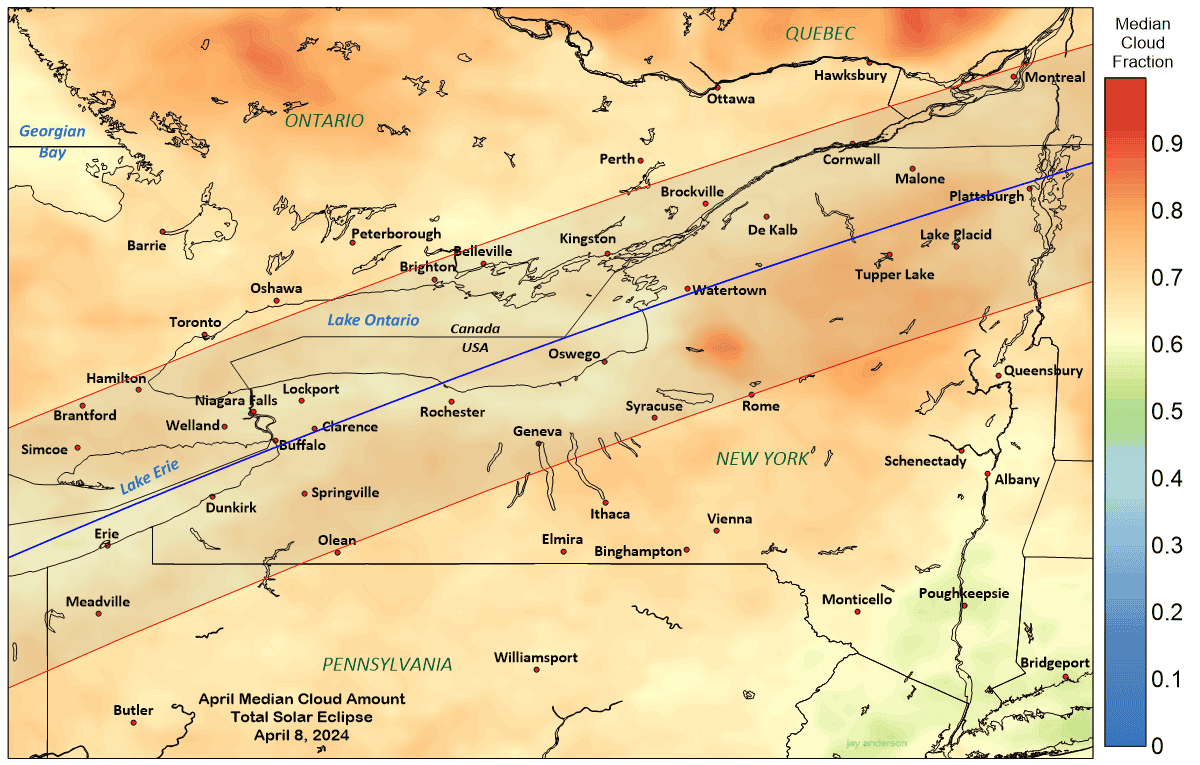
| City inside the path of totality | Duration of totality | Partial eclipse begins | Total eclipse begins | Partial eclipse ends |
|---|---|---|---|---|
| Erie, Pennsylvania | 3m 43s | 2:02 p.m. EDT | 3:16 p.m. EDT | 4:30 p.m. EDT |
Note: The total solar eclipse will enter Pennsylvania at around 3:15 p.m. EDT and leave the state at around 3:20 p.m. EDT.
The time and path of the total solar eclipse over New York

| City inside the path of totality | Duration of totality | Partial eclipse begins | Total eclipse begins | Partial eclipse ends |
|---|---|---|---|---|
| Buffalo, New York | 3m 45s | 2:04 p.m. EDT | 3:18 p.m. EDT | 4:32 p.m. EDT |
| Rochester, New York | 3m 40s | 2:06 p.m. EDT | 3:20 p.m. EDT | 4:33 p.m. EDT |
| Syracuse, New York | 1m 26s | 2:09 p.m. EDT | 3:23 p.m. EDT | 4:34 p.m. EDT |
Note: The total solar eclipse will enter New York at around 3:16 p.m. EDT and leave the state at around 3:29 p.m. EDT. However, New York City will be located outside the path of totality, where a deep partial solar eclipse will be seen (the moon will cover 90% of the sun at around 3:25 p.m. EDT).
The time and path of the total solar eclipse over Vermont
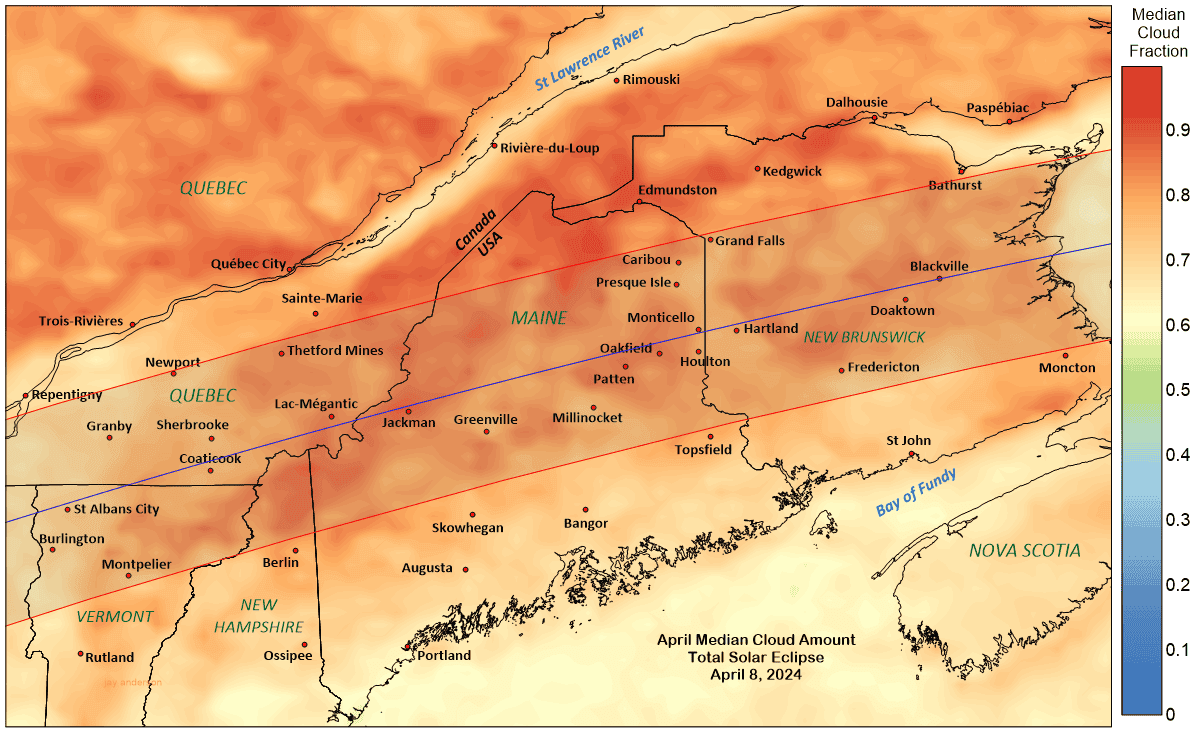
| City inside the path of totality | Duration of totality | Partial eclipse begins | Total eclipse begins | Partial eclipse ends |
|---|---|---|---|---|
| Burlington, Vermont | 3m 14s | 2:14 p.m. EDT | 3:26 p.m. EDT | 4:37 p.m. EDT |
| Newport, Vermont | 3m 26s | 2:16 p.m. EDT | 3:27 p.m. EDT | 4:38 p.m. EDT |
Note: The total solar eclipse will enter Vermont at around 3:25 p.m. EDT and leave the state at around 3:31 p.m. EDT.
The time and path of the total solar eclipse over New Hampshire

| City inside the path of totality | Duration of totality | Partial eclipse begins | Total eclipse begins | Partial eclipse ends |
|---|---|---|---|---|
| Lancaster, New Hampshire | 3m | 2:16 p.m. EDT | 3:27 p.m. EDT | 4:38 p.m. EDT |
Note: The total solar eclipse will enter New Hampshire at around 3:28 p.m. EDT and leave the state at around 3:32 p.m. EDT.
The time and path of the total solar eclipse over Maine

| City inside the path of totality | Duration of totality | Partial eclipse begins | Total eclipse begins | Partial eclipse ends |
|---|---|---|---|---|
| Island Falls, Maine | 3m 20s | 2:21 p.m. EDT | 3:31 p.m. EDT | 4:40 p.m. EDT |
| Caribou, Maine | 2m 18s | 2:22 p.m. EDT | 3:32 p.m. EDT | 4:40 p.m. EDT |
Note: The total solar eclipse will enter Maine at around 3:28 p.m. EDT and leave the state at around 3:35 p.m. EDT.
The time and path of the total solar eclipse over Canada
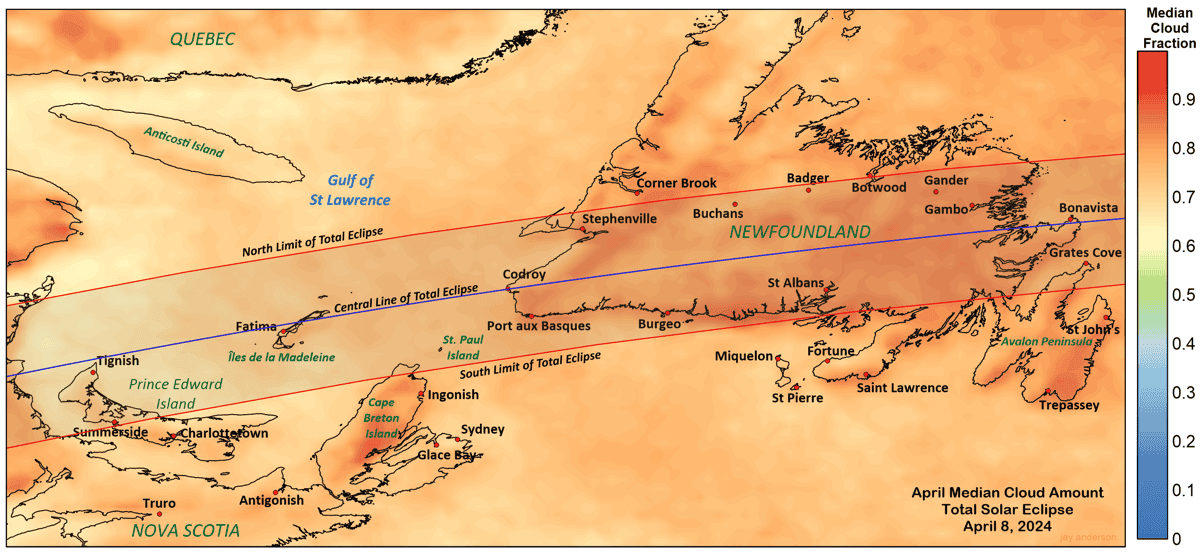
| City inside the path of totality | Duration of totality | Partial eclipse begins | Total eclipse begins | Partial eclipse ends |
|---|---|---|---|---|
| Brantford, Ontario, Canada | 1m 27s | 2:03 p.m. EDT | 3:17 p.m. EDT | 4:31 p.m. EDT |
| Montreal, Quebec, Canada | 1m 12s | 2:14 p.m. EDT | 3:26 p.m. EDT | 4:36 p.m. EDT |
| Granby, Quebec, Canada | 3m 2s | 2:15 p.m. EDT | 3:27 p.m. EDT | 4:37 p.m. EDT |
| Grand Falls, New Brunswick, Canada | 1m 10s | 3:22 p.m. ADT | 4:33 p.m. ADT | 5:40 p.m. ADT |
| Grand Falls-Windsor, Newfoundland, Canada | 1m 52s | 4:06 p.m. NDT | 5:12 p.m. NDT | 6:16 p.m. NDT |
| Gander, Newfoundland, Canada | 2m 13s | 4:07 p.m. NDT | 5:13 p.m. NDT | 6:16 p.m. NDT |
Here, Atlantic Daylight Time (ADT) = UTC – 3 hours
Newfoundland Daylight Time (NDT) = UTC – 2.5 hours.
Note: The total solar eclipse will enter Canada at around 3:12 p.m. EDT and leave the country at around 5:16 p.m. NDT. However, only the southeast part of Canada, which is very close to the US border, will fall into the path of totality. Toronto will be located very close to the path of totality, where a deep partial solar eclipse will be seen (the moon will cover 99.9% of the sun at around 3:19 p.m. EDT).
Viewing tips
It is not safe to look at the sun with an unaided eye. Use eclipse glasses when you look at the sun directly, or use a solar filter in front of your camera lens, binoculars, or telescope when you look through a camera, binoculars, or telescope.
However, if you are in the path of totality, then you can experience the total solar eclipse with your naked eyes for a few minutes when the moon will entirely (100%) block the disk of the sun.
Resources
Visit here to see the interactive map of the total solar eclipse on April 8, 2024.
Visit here to know the precise time of the total solar eclipse on April 8, 2024, and the maximum amount of sun coverage from your location (by entering your city name or ZIP code).
Please bookmark Spaceandtelescope.com or follow us on Facebook and Twitter to get latest space news, upcoming skywatching events and astronomy-related content.
